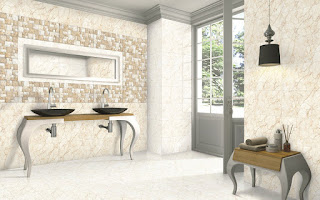WONDERING HOW TMT BARS ARE MANUFACTURED?
Have you ever wondered how the TMT BARS used the construction of all the edifices that we are in are manufactured? This was something that I have always wondered about. The fact is that many of us are actually curious about how many things around us are manufactured, yet we don’t make the effort to actually understand how it’s all done. TMT steel bars have a crucial role in the construction industry. In this blog let’s briefly go through the manufacturing process of TMT steel bars.
Firstly,
TMT stands for Thermo Mechanically Treated bars. The TMT bars are distinguished
for their two layers of the core which is well known as the OUTER HARDCORE and the INNER
SOFTCORE. This unique property makes them robust and sturdy and enables
them to last a lifetime.
The quality of the TMT bars depends on various
factors like the raw materials used, the technology and machinery used for
quenching and self tampering processes and finally the ability of the rolling
mill- which gives shape to the material.
Lets
now dive into the industrial processes involved in the production.
1.
EXTRACTION OF RAW MATERIAL AND SHAPING
THEM INTO REINFORCED BARS.
Firstly
the raw materials such as coke, iron ore, dolomite, and limestone are put into a
blast furnace and are treated with hot gases in order to achieve a molten
liquid-like state. This is then pre-heated and is converted into steel. Steel
and its chemical composition still need to undergo refinement during this stage,
for which they are refined by passing through ladle heating. The materials are
in their molten state, which can now be easily cast into any desired shape
and size by just pouring them into the casting machine. The molten steel is
heated up to 1250 degrees Celsius to reach the required shape and is then
rolled in a rolling mill to structure them into reinforced bars.
2. QUENCHING
The
heated steel bars are left to cool down or quenched by a rapid cooling process,
which ensures that the purity of the metal stays intact and avoids the accumulation
of any kind of undesirable properties. The rapid cooling of steel is known as
the quenching of reinforced steel bars. Quenching helps in the prevention of
the steel forming into a crystalline structure. Quenching reduces the time
frame in which the material is thermodynamically favorable towards attaining
any undesirable structure such as crystallization of the material.
3. SELF TEMPERING
Self
tempering helps in the structure of the TMT bars. After quenching the material
cools down. The core of the bar remains at a higher temperature than the
surface. Thus the heat is transferred from the core to the surface of the bar.
This results in the outer structure being tempered. This self-tempering process
causes the formation of a ring made out of martensite and bainite, thus forming
a tempered martensite outer surface.
4 .ATMOSPHERIC COOLING
Finally, we have
reached the final stage in the production of the TMT bars. As the title suggests this is the cooling
stage. The bars are laid out on a cooling bed at normal temperatures to cool
down. This is done to uniform the differences of heat between the core and the
outer surface. After reaching the normal temperatures, the core attains a
ferrite-pearlite structure. Atmospheric cooling makes the TMT bars more ductile
and weldable.
As we reach the end of the blog, I have made
it as simple and brief as possible for better understanding and comprehension.
I hope the information provided here was useful to you all and that it has
satisfied your curiosity.
Looking for the best TMT Steel Dealers in Bangalore? Your search ends here in Meenakshi Build World. Our brands are Indus TMT Steel,Kamdhenu TMT Steel,Gopala TMT Steel and Tata Tiscon TMT Steel
SHOP NOW @ MEENAKSHI BUILD WORLD



Comments
Post a Comment